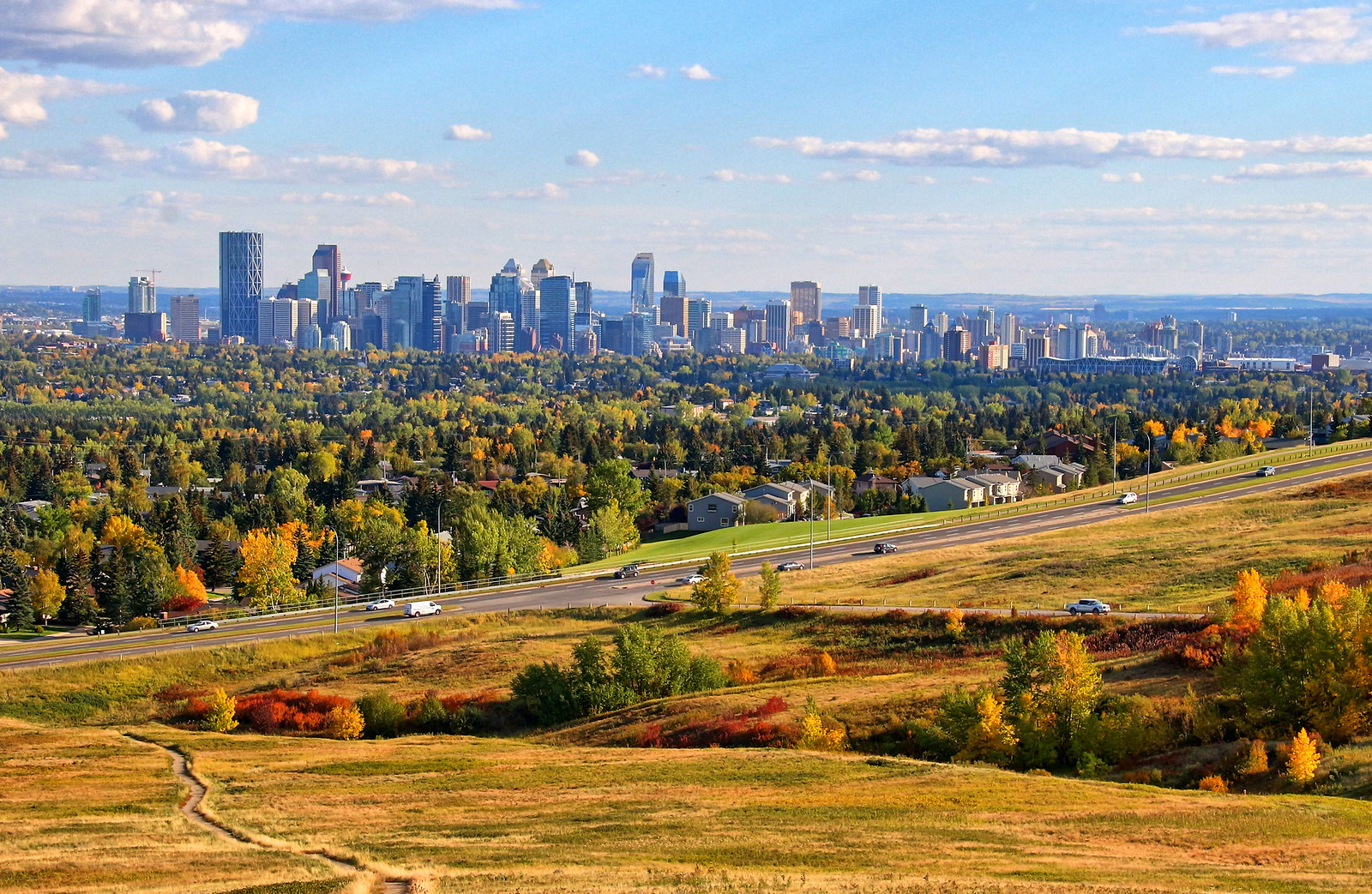Quote:
Originally Posted by The ATX

If this photo is representative of the Calgary area, downtown, the suburbs and the country are all located in a very short distance from each other. No wonder Canadian cities punch way above their weight in terms of downtown development when compared to American cities of a similar size. I wonder if it's zoning or the fact that Canadians like to huddle together due to the cold weather?  Australian cities seem to develop in a similar way to Canadian cities though, so that kills the cold weather theory.
 |
I've been meaning to respond to this, but have been busy lately. I'm fairly certain this photo is taken from Nose Hill Park,
https://goo.gl/maps/LdvE6wWgtoJ2
which is a large prairie preserve surrounded by suburban sprawl, so it looks like the 'country' is closer in than it is. That being said, Canadian cities are, on average, about twice as dense as comparable sized American cities.
Take Calgary for example. At a little over 1.2 million, it is somewhat similar in size to Austin. I say 'somewhat' not only because it is roughly 20% larger, but also because its CMA population is only 1.4 million, compared to Austin's MSA of over 2 million.
Calgary's urban area is less than 20% smaller than Austin's at 226 square miles, but with the additional population, the urban density is 5,500 / square mile compared to Austin's at 3,500. Calgary is probably on of Canada's least 'urban' cities, and feels much more 'American' than most.
The reason for the differences between Canadian and American cities is not just zoning, but urban planning practice in general. Planning is more 'centralized' in Canada with greater powers at both the Federal and Provincial levels. Canadian culture respects planning and environmental protection as much, or more so, than individual property rights. In addition, (or as a result), Canadian governments invest more in transit, and Canadians use transit much more so than Americans. There is also no Interstate Highway program or residential mortgage deduction, both of which have been blamed for sprawl in the US.
But overall, I think the greatest difference is that Canadian cities actively try to manage growth through best practice planning principles. In Texas, cities can only manage growth within city limits, and even then the legislature is constantly trying to take away planning powers. Land owners in Texas outside of city limits have almost no development restrictions, which results in low density, discontinuous sprawl for miles surrounding cities. And because Texas has a lot of large cities in relatively close proximity to one another, and high growth rates, the sprawl is quickly merging into one undifferentiated megalopolis, particularly along the interstates.



